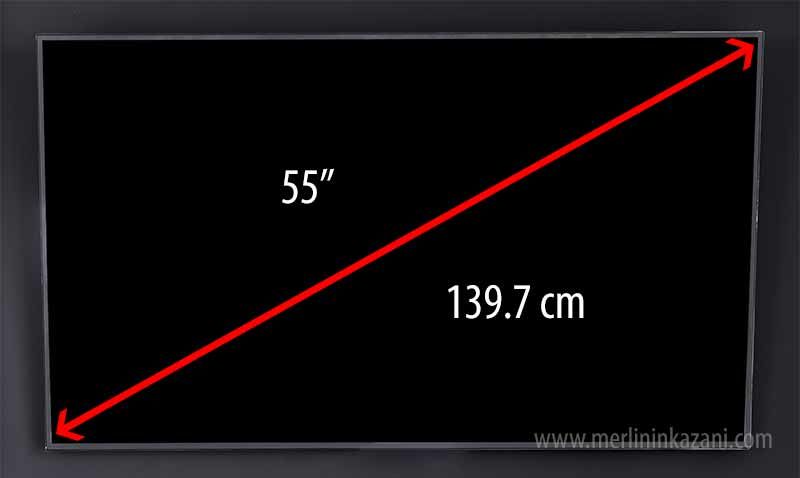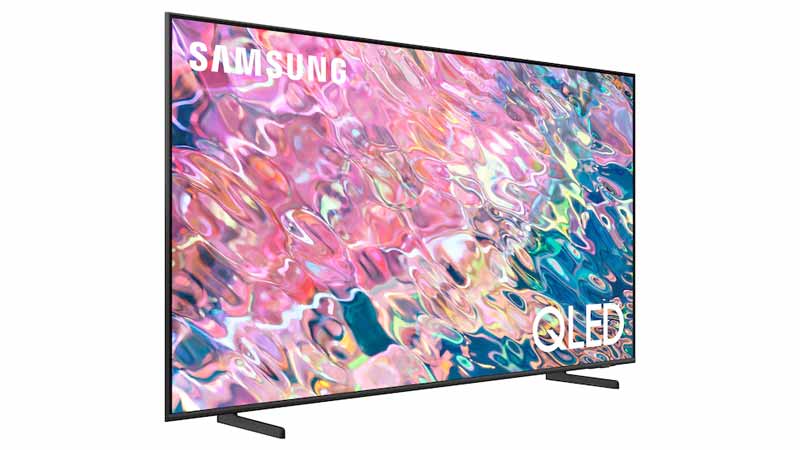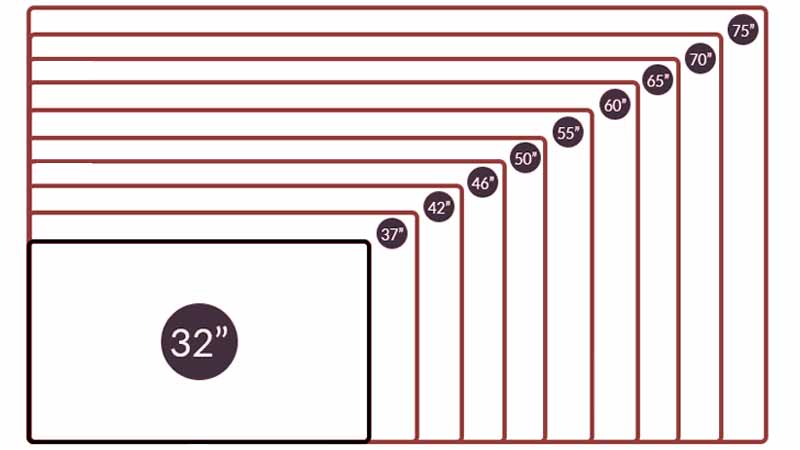How many cm is 55 inches on a television?
The dimensions of televisions and monitors are expressed in inches. How are these translated dimensions calculated? How many cm is 55 inches? It is quite simple to convert the number to centimetres.
The most important communication tools we use in our daily lives are used with a screen mounted or by adding a screen. These include televisions, monitors and even mobile phones. “So how many cm is 55 inches?” Have you thought? You may not be able to visualise the size of the television you will buy, expressed in inches, in your head at first.
How many cm is 55 inches in TVs?
We use the double prime symbol ” and the abbreviation ” to denote length in traditional units of the United States. Since one inch is equal to 2.54 centimetres, we need to multiply the number of inches by 2.54 to get 55” in cm.
Since one inch is equal to 2,54 centimetres, we need to multiply the amount of inches by 2,54 to get the width, height or length in decimal units centimetres to get 55 inches in cm.
- 55 inches in inches = 139,7 cm
- 55 inches to cm = 139.7 cm
55 inches in cm: 55 inches equals 55 x 2.54 = 139.7 centimetres.
How many cm is 55 inch TV?
Naturally, the answer to our question “How many cm is 55 inches on TV?” is also solved quite simply. It is 139.7 cm. However, the most important issue here is the most important issue to pay attention to which screen size values this figure expresses. You can fully understand this length, which refers to diagonal corners, in the image below.

If you want to calculate the edges accordingly, the values for a 16X9 format television are approximately 121.5 cm at the top and bottom edges, and 68.5 cm at the right and left edges.
Of course, it is useful to know that these values are the internal values of the screen. Because many products have different frame thicknesses, you will get different values if you measure them.
Thanks to this information, you can see how much space the TV you plan to buy will take up on the wall of your home, using the dimensions here.
Today, Smart TV television sizes can be of very different sizes. For this reason, it is your most natural right to know exactly the size when choosing a television model. In general, the dimensions expressed in inches are not very meaningful for us within the framework of the general standards used in the world. For this reason, it is very important to know the exact dimensions of the product we want in gaming monitor and TV models.
How to convert 55 inches to cm
By now you already know how 55 inches is converted to cm and how to convert 55 inches to cm. In fact, converting 55 inches to centimetres is a simple multiplication.
Still, instead of entering numbers like 55 inches cm into your calculator, you’d better use our convenient inch to centimetre converter above.
- Leave the first field (‘) blank.
- Then, in the second field (¨) enter the amount in ¨.
- For example, enter 55 to get 55″ in cm.
55 inch televisions
55-inch televisions are a very popular size and are often used in homes. Televisions of this size can support high-definition content (for example, 4K and Ultra HD) and offer a large viewing area. In addition, the 55-inch size is a suitable option for a room with enough distance to watch TV.

A few popular brands and models of 55-inch TVs that you can get acquainted with are listed below:
- Samsung 55″ QLED Q60A Series
- LG 55″ OLED CX Series
- Sony 55″ BRAVIA XR X90J Series
- Vizio 55″ OLED H1 Series
- TCL 55″ 6-Series 4K QLED TV
- Hisense 55″ U6G Series
- Philips 55″ OLED 805 Series
- Panasonic 55″ HX940 Series
This is just a few examples and there are many different 55-inch television models on the market. Before buying, it is advisable to do research to choose the one that suits your needs and budget.
FAQs
What to look for when buying a television?
It is important to pay attention to the following factors when buying a television:
- Screen Size: It is important to choose the screen size of the television according to the size of your home or room. Make sure the screen size is appropriate for the size of your room to ensure adequate viewing distance.
Screen Technology: Television screen technologies include different options such as LCD, LED, OLED and QLED. OLED and QLED technologies offer higher contrast ratios and more vibrant colours. - Resolution: Resolution is a factor that determines the image quality of the television. 4K and Ultra HD resolutions offer higher quality images.
- Input/Output Ports: Your TV’s input/output ports are important for connecting external devices (e.g., game consoles, Blu-ray players, etc.).
- Smart TV Features: Some televisions include smart TV features that allow you to connect to the internet. Smart TV features may include applications such as Netflix, Hulu, Amazon Prime Video.
- Brand and Warranty: A quality brand’s television provides a better user experience. In addition, the warranty of the television you purchase will help you when you encounter malfunctions or problems.
- Price: Television prices can vary greatly. Determine your budget before purchasing and choose the most suitable television for your needs.
Paying attention to these factors will help you make the right choice of television.
Why is the unit in inches used in televisions?
Inches are used as the unit of measurement for television screens. This means that television screens are usually rectangular in shape and their dimensions can be expressed horizontally (width) and vertically (height). The inch is a common unit of measurement used to express the width of the screen size.
Also, the inch unit is traditionally used in the television industry. The television industry has developed greatly since the 1950s, when the first televisions became widely available, and the inch unit has led to the adoption of the inch as a standard unit of measurement for television sizes in many countries.
The inch unit is used to express the dimensions of television screens, and this unit has a long history and has become the industry standard.
The use of the inch unit in televisions is also important in terms of image quality and detail. The inch unit also gives an idea about the number of pixels that determine the resolution of the screen and the factors affecting the image quality.

Pixel density on television screens is expressed as the number of inches per pixel. That is, the pixel density is found by dividing the number of pixels of the screen per inch. The higher the pixel density, the higher the image quality of the screen. Therefore, having a larger screen size may result in a loss of image quality when it does not have sufficient pixel density.
In addition, the unit inch also refers to the ratio of the height and width of the television. This means that when evaluating the screen size of the television, it is also necessary to pay attention to its proportions. For example, 16:9 is one of the most common screen ratios and is often used in widescreen TVs.
As a result, the inch unit is an important factor in determining the size, pixel density, image quality and screen ratio of the TV. When buying a TV, you can ensure the best image quality and user experience by choosing a TV that is compatible with the size, features and budget you need.
How wide is a 50-inch TV?
The width of a 50-inch TV may vary depending on the make and model, but approximately the average width varies between 111 cm and 115 cm. This width covers the entire TV, including the screen frame.
65 inch How tall is the width?
The width and height of a 65-inch television may vary depending on the make and model, but the approximate average dimensions are as follows:
- Width (horizontal length): Approximately 145 cm to 160 cm.
- Height (vertical length): Approximately 81 cm to 91 cm.
However, there may be some variations in these measurements depending on the make and model of the TV. Therefore, it is recommended that you consult the documentation of your preferred TV or the manufacturer’s website to find out the correct measurements.
What is the 58-inch TV width and length?
The width and length of a 58-inch TV may vary depending on the make and model, but the approximate average measurements are as follows:
- Width (horizontal length): Approximately 128 cm to 132 cm.
- Height (vertical length): Approximately 72 cm to 76 cm.
In addition to the dimensions of a 58-inch TV, there are some other factors to consider when buying one. Some of them are the following:
- Screen resolution: Higher resolutions, such as 4K Ultra HD or 8K, offer clearer and sharper images.
- HDR features: High Dynamic Range (HDR) features make colours look more vibrant and natural.
- Inputs: Your TV has enough HDMI, USB and other inputs to allow you to connect different devices.
- Sound quality: The quality of the built-in speakers is also important. Some TVs can be paired with soundbars or speaker systems for better sound quality.
- Smart TV features: Some televisions offer smart TV features so you can download apps, connect to the internet and make them compatible with other smart devices.
- Make and model: Choosing a good brand ensures you get a better quality product. It is also important to be aware of the varying features and prices within the model.




